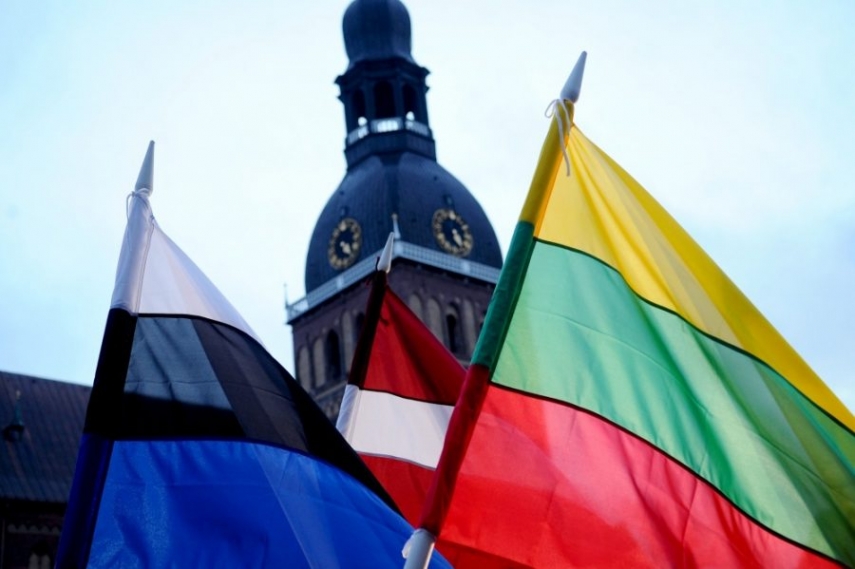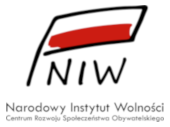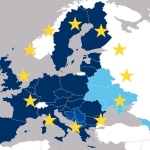SPECIAL REPORTS
Date: 26 October 2020
Author: Bartosz Fraszka
Baltic States Versus Russian Hybrid Threats
The threat from Russia’s foreign and security policy relying upon the strategic concept of rebuilding the sphere of influence in the countries of the former Union of Soviet Socialist Republics, or USSR, is what connects internal security of the Baltic States – Lithuania, Latvia, and Estonia.
- This article delivers an analysis of papers, referred hereinafter as reports, published by the following Baltic special services:
- National Threat Assessment 2020, compiled jointly by the State Security Department of the Republic of Lithuania (Valstybės Saugumo Departamentas, VSD), an agency tasked with counterintelligence and civilian intelligence services and the Second Investigation Department under the Ministry of National Defence (Antrasis Operatyvinių Tarnybų Departamentas prie Krašto Apsaugos Ministerijos, AOTD), military intelligence and counterintelligence services of the Republic of Lithuania[1].
- Annual Report on VDD’s activities in 2019, authored by the State Security Service (Valsts Drošības Dienests, VDD), Latvia’s civilian counterintelligence service[2].
- Annual Security Review 2019/2020, published by the Estonian Internal Security Service (Kaitsepolitseiamet, KAPO), counterintelligence service of the Republic of Estonia[3].
- Annual reports by Baltic special services, which offer a current threat assessment to their both internal and external security, have in recent years pointed Russia – and still do so – as the chief adversary to the security of Lithuania, Latvia, and Estonia.
- Russia poses the gravest hybrid threats to the Baltics that the Kremlin considers the area of its top national interests. Hybrid threats that the Russian Federation represents to Lithuania, Latvia, and Estonia refer to such domains and agencies as special services, public diplomacy, and central state authorities.
- The reports give a comprehensive and multifaceted analysis of origins, nature, and scale of the danger to these three’s raison d’Etat. Furthermore, they are complementary to political papers and normative acts while explaining the current course of security policy in the Baltics as outlined in their national security strategies.

DEFINING HYBRID THREATS
Russia’s annexation of Crimea in March 2014 corroborated Moscow’s imperialist pursuits to restore its role amongst the world’s actors it had lost after the collapse of the Soviet Union in 1991. The Crimea case seems now a good starting point for current thoughts on the very essence of hybrid threats. This is what pushed the Baltic republics towards adjusting their security policies to genuine hybrid threats from the Russian Federation, a blow to their sovereignty, independence, and integrity with Western security agencies[4]. Baltic special services precisely identified these threats in their reports, which confirms how situationally aware they are. This also places Lithuania, Latvia, and Estonia on the list of participants of an unofficial albeit ongoing hybrid conflict between EU/NATO states and Russia.
As a conflict, Russia’s hybrid warfare against European Union (EU) nations and the North Atlantic Alliance, or NATO, is uneasy to define. What awakens research curiosity is the adjective hybrid. It is difficult to find a more dynamically developing concept in security studies than hybrid threat. Linguists define hybrid as “something that is a mixture of different elements, often not matching each other[5].” Thus, in military strategy, hybrid activities are a combination of symmetric and asymmetric war[6]. Among the available definitions of a hybrid threat, perhaps the most complex one is that of the European External Action Service, labeling hybrid threats as a combination of “conventional and unconventional, military and non-military activities that can be used in a coordinated manner by state or non-state actors to achieve specific political objectives.” Their diversity consists in the use of tools and tactics “designed to be difficult to detect or attribute,” and “seeking to create confusion to hinder swift and effective decision-making” targeting “critical vulnerabilities.” Hybrid threats “can range from cyberattacks on critical information systems, through the disruption of critical services such as energy supplies or financial services, to the undermining of public trust in government institutions or the deepening of social divisions[7].”
Furthermore, the European Center of Excellence for Combating Hybrid Threats defined hybrid threats as “coordinated and synchronized action, that deliberately targets democratic states’ and institutions systemic vulnerabilities, through a wide range of means.” As the effectiveness depends much on the activities below the thresholds of detection and attribution, any security forces find it either difficult or impossible to deliver an unambiguous defense reaction. Those who present hybrid threats draw the blurred line between concepts like war and peace, ally and enemy, or national or international sphere, both in legal aspects and by their definitions. The top aim of the activity is to influence different forms of decision making at the local, state, or institutional level to favor and gain the agent’s strategic goals while undermining and hurting the target.
A range of components behind hybrid threats is still ready for new additions as the security environment is undergoing dynamic shifts bringing in new facts to the definition.

GEOPOLITICAL FEATURES OF THE BALTIC SEA
With the surface area totaling 415,266 square kilometers, or twice as much as the total area of Belarus, the Baltic Sea consists of a few regions and basins––the Baltic Proper, the Bothnian Sea, the Gulfs of Bothnia, Finland, and Riga. It drains through the Danish straits of the Sound, the Great Belt, and the Little Belt––all of them laying close to the Jutland Peninsula and the Kattegat and Skagerrak straits that separate the Baltic Sea and the North Sea. The Baltic Sea features also some islands being of key importance for geostrategic control of the body of water: Finland’s Åland Islands, Estonia’s Hiiumaa and Saaremaa, Sweden’s Gotland, and Denmark’s Bornholm.
The Baltic Sea is one of the top directions for Russia’s foreign and security policies while also being where Moscow is pursuing its vital interests. In the northern part of the Baltic Sea lies St. Petersburg, a Russian city at the head of the Gulf of Finland, and in the south, there is Kaliningrad Oblast, the country’s military exclave in this part of Europe and its somewhat “window to the West.” This allows Russia to embolden its military presence in the Baltic Sea and have a real impact on the energy security of both countries in the region and the whole European Union.
Running along the Baltic Sea from Vyborg, Russia to Lubmin, Germany, with an annual capacity of 55 billion cubic meters (bcm) of natural gas, the Nord Stream 1 energy link and its sister pipeline, Nord Stream 2, with a similar capacity and set to become operational soon, both bypass Central and Eastern Europe, including the Baltic countries. For the Kremlin, the project is of both political and commercial importance while opening up an alternative route for natural gas flows to Western Europe to go around transit nations like Ukraine[8].
Owing to Cold War-era ties between Lithuania, Latvia, and Estonia on the one hand and Russia on the other, the region is now a battlefield where Moscow is seeking to reconstruct its post-Soviet sphere of influence. So far Russia has revealed its expansive feats there, also by dispatching forces of the Western Military District of the Armed Forces of the Russian Federation, also that of the Baltic Fleet, headquartered in Baltiysk, Kaliningrad, a move that overwhelmed Estonia, Lithuania, and Latvia with a feeling of danger. Besides Russia, amongst the countries enclosing the Baltic Sea are also eight EU member states, of which six belong to the North Atlantic Alliance. Sweden and Finland––both of which are openly seeking to strengthen military ties with both the North Atlantic Alliance and the EU’s Permanent Structured Cooperation (PESCO)––side with the military bloc in the event of a potential conflict. Going further, if a major confrontation arose between Russia and NATO, geopolitically the Baltic Sea might be almost wholly out of control of the Russian Federation[9].
These brief features of the Baltic Sea explain how geopolitically salient the body of water is in an all-out rivalry between Russia and Western nations. Besides, in this report, the geopolitical perspective of the Baltic Sea is fundamental to analyze both current and possible hybrid threats to the security of the Baltic nations, as thoroughly outlined in papers published by their special services.

COMMON HYBRID THREATS OF THE BALTIC STATES
The content of the security and risk assessment reports by the special services of the Baltic states allows us to outline a common denominator for their security environment and draft a universal repertoire of current hybrid threats for the three republics.
1. Russia represents the most serious hybrid threats to the internal security and constitutional order of the Baltic nations. The Kremlin’s belligerent foreign and security policies are linked to the country’s imperialist pursuit to rebuild its position in the Baltic Sea and move its sphere of influence further, to stretch to the Baltics, a move that generates threats to the raison d’Etat of Lithuania, Latvia, and Estonia.
2. In doing so, Moscow has at its disposal special services––as tools for going ahead with its foreign and security policies towards the Baltic nations to pose the biggest threat possible to both the internal security and constitutional order of Latvia, Lithuania, and Estonia[10]. In their reports, all Baltic special services insist on the destructive nature of the activities performed jointly by the Russian intelligence services and their Belarusian peers. Posed by the FSB, GRU, and SVR, hybrid threats to Lithuania, Latvia, and Estonia target a number of areas, notably politics, diplomacy, military, economy, energy, society, and culture. Russian intelligence services’ activities are tracked mainly in Russia, but also the Commonwealth of Independent States, or CIS. Both the FSB and the GRU are actively recruiting Baltic nationals[11]. All spying cases disclosed so far in the Baltic States refer to any activities for the benefit of either the Russian Federation or the Republic of Belarus.
3. In the reports, their authors place in spotlight Moscow’s hybrid actions against the Baltic nations as being part of a broader security and foreign strategy, with the following key goals:
a) impeding NATO’s expansion toward Russia’s borders, in the Baltic Sea, the Caucasus, and the Balkans;
b) disintegrating the European Union, undermining its democracy-based legal order, and taking advantage of any situations that bring to the fore chasms between individual bloc members;
c) promoting international cooperation between Russia and EU states, based on bilateral ties, and not collegial supranational bodies;
d) building Russia’s image of a “besieged fortress” among European societies by igniting Russophobic moods, a move that integrates and solidifies Russian-speaking communities in these countries, and shifts the perception of Russian foreign policy among members of Russian society.
Support Us
If content prepared by Warsaw Institute team is useful for you, please support our actions. Donations from private persons are necessary for the continuation of our mission.
4. The level of threat from terrorism is low in all three Baltic nations––and so is the likelihood of a terrorist attack. Although other European countries note higher threats levels from right-wing militants, Islamic insurgents, and terror groups, the Baltic countries are now a little interesting target for terrorists. In their reports, security services in Lithuania, Latvia, and Estonia cast a spotlight on a couple of examples where foreign-inspired political and religious extremism came to the fore, with other powers or groups like IS.
5. The military facet of hybrid threats wholly addressed to the North Atlantic Alliance refers notably to the Baltic nations. In the Russian deterrence strategy, Kremlin senior officials do not resort exclusively to dispatching troops to the Western Military District and carrying out full-scale offensive drills[12]. Russia consequently creates perilous situations by holding Baltic Fleet war-gaming exercises right off the coasts of other countries or by repeatedly intruding their airspace.
6. Latvian, Estonian, and Lithuanian cyberspace is one of the top targets for Russian special services and related agents. In 2007, Estonia became the target of a coordinated cyber attack, the starting point of the cyber war era that made cyberspace a permanent feature of the critical state administration[13]. Both VDD and KAPO reported most spying cases among Russian-based hacking groups targeting essentially state and local government institutions and critical infrastructure agencies. In their analyses, VSD and AOTD paid attention to the cyber espionage of Russian intelligence agencies, including the GRU group Sofacy/APT28 and the FSB group Agentbtz/Snake, adding they might employ the fifth-generation (5G) communication technology for cyber espionage. What Lithuania has experienced reveals that Russian special services use the online space to wage disinformation campaigns against defense sectors in the Baltic countries to disgrace them in the eyes of other NATO states. Besides, special services of the Baltic republics pinpointed in their reports a set of intelligence and cyber threats from the People’s Republic of China.
7. In its report, Latvia’s VDD draws attention to plausible risks originating from what is referred to as Latvian cross-border projects with Russian entities. Latvian municipalities see their cooperation with Russian agencies being part of cross-border projects as risky due to likely espionage perils and their repercussions for the state internal security. Just to cite here an example that involved placing CCTV cameras, an idea put forward by the Pskov region administration, for monitoring natural resources off the Latvian lake districts that the country’s State Security Service eyes as an evident attempt to install spying devices in Latvia to gather intelligence data.

WITH IT REPRESENTATIVES. SOURCE: GOVERNMENT.RU
8. According to data from the general population census of 2011, 5.8 percent of Lithuanians were ethnic Russians[14], compared to 26.9 percent (2011) and 24.6 percent[15] (2020) in Latvia and Estonia respectively[16]. Russian state agencies seek to integrate Russian-speaking groups in both Latvia and Estonia by using aggressive historical propaganda to promote a positive image of both the Soviet Union and Russia, which poses one of the biggest threats to these states and their constitutional order. Russian diplomats in Riga and Tallinn are also taking active steps to solidify members of the Russian minority, also through agencies like the Russkiy Mir Foundation or Rossotrudnichestvo[17]. Efforts to protect ethnic Russians living in the Baltic countries go hand in hand with the Russian hybrid activities that seek to gain the favor of these groups for the Kremlin’s belligerent foreign course and create a positive image of the Russian authorities amongst people in Russia.
9. Pro-Russian NGOs and public entities take advantage of the benefits of democracy and freedom of speech to produce an accusatory narrative against Latvian and Estonian officials, balking at them over their alleged discriminatory moves against ethnic Russians in both countries. Behind these feats are both Russian diplomats and special services that look to discredit these states in the eyes of other countries around the globe. At a later stage of hybrid activities, Russian-made rhetoric equips Moscow with a comfortable pretext to conceal actions aimed at “protecting an oppressed minority,” a Kremlin solution that played out first in Georgia in 2008, and then in Ukraine in 2014. Any response from Latvian or Estonian officials to these statements is met with accusations of Russophobia, suppression of freedom of speech, human rights abuse, and promoting fascism[18].
10. Russia is also going ahead with alluring Russian-speaking young people in the Baltic countries to become members of pro-Russian institutions like the Latvian Council of Civic Organisations (LSOP) or the Union of Associations of the Russian Minority in Estonia[19]. One more example of Russia’s hybrid activities is an effort to promote an educational offer to encourage young Russian speakers in the Baltic countries to study at universities across Russia. Both Latvia’s VDD and Estonia’s KAPO also warn against Russian efforts to recruit alumni, also those of the Moscow State Institute of International Relations (MGIMO).
11. Numerous reports by the Baltic special services focus on the Kremlin’s aggressive information policy, historical propaganda, and disinformation campaigns staged by the country’s senior officials[20]. Russia’s politics of history has a clear goal: to emphasize the Soviet contribution to the development of the Baltic states while denying their annexation and then occupation. With this narrative, Russia insists on the ties between the former Soviet republics and the Russian Federation, which serves as an attempt to drag them into countries being Moscow’s exclusive sphere of influence. Russia mobilizes historical propaganda messages in the Baltic states to promote its version of history, notably that of World War II[21]. In the Russian-made information engineering that constructs the politics of history, the Kremlin tends to resort to the following tools: a) consistent moves to reinterpret past events to make Russia a hero and a liberator, and not an aggressor and occupant, b) erecting new monuments to the Red Army and renovating already existing ones, c) offering (financial) aid to historical events as an opportunity to depict the Russian version of history, d) using media outlets to air television shows aligned with the Russian historical propaganda.
12. Russia is constantly interfering with political processes in the Baltics by backing political parties being close to the Kremlin’s current political interest. Estonia’s KAPO has drafted a list of pro-Russian political parties and Russian-backed NGOs[22], both serving as a comfortable channel for Russian officials. In Lithuania, special services did not spot any Russian attempt to meddle in the 2019 parliamentary vote yet with its propaganda tools, Moscow waged disinformation campaigns to discard the image of Lithuanian politicians expressing a negative view of Moscow’s current policy.
13. The Kremlin makes intensive use of public diplomacy in the Baltic nations and other countries to introduce top-down guidelines in its propaganda and information strategies, thus to pose more hybrid threats. One example is Russian-staged events to make the public opinion shift its stance on the annexation of Crimea and give consent to the status quo in the peninsula. Russia’s propaganda apparatus skillfully takes advantage of the fact that foreign officials attend these meetings, portraying this as a sign of international support for Russia’s feats in Crimea, a step that fits into Moscow’s strategic thought and sustains the Kremlin’s narrative of information policy. In the report, Lithuania’s VSD stands firm that such Russian-held conferences open up an opportunity for the country’s special services to recruit new sources that might possibly operate for Russia.
14. In its hybrid war against the Baltic nations, Russia has a number of legal and institutional tools––like issuing passports or launching repatriation programs. By simplifying legal procedures to acquire Russian citizenship, or passport, Russia reaps a double benefit. First, this comes as an alluring offer for ethnic Russians in Estonia and Lithuania and the whole undertaking increases the share of Russian nationals in the total population of these states. Also, this legitimizes the narrative of the information policy pursued by the Russian propaganda apparatus. Besides, by looking for new citizens outside the country, Russia is trying to tackle the demographic crisis at home[23]. Also, through its repatriation program in Estonia, Russian officials sought to convince members of local Russian-speaking groups to return to their “true homeland.” In the report, Estonia’s KAPO even mocked at the failed undertaking.
15. Economic security is what is of critical importance for the functioning and development of the Baltic countries. Russia consistently balks at infrastructure projects in the Baltic republics––such as Rail Baltica––chiding at them as unprofitable and unsustainable while arguing it develops anti-Russian military infrastructure. Nonetheless, diversifying energy supplies, adding new directions, and expanding the gas pipeline network (Balticconnector) or energy infrastructure projects (EU-wide Connecting Europe Facility) are all vital for the security of the Baltic nations. Also, the electricity systems of the Baltic states and Russia are tightly interconnected and integrated into the BRELL (Belarus, Russia, Estonia, Latvia, and Lithuania) electrical grid that enables Russia to control the frequency regulation and thus put pressure on the Baltic countries[24]. The energy sector in the Baltics is still a target of Russian cyber attacks. Russia is sparing no efforts to make the Baltic republics fully reliant on its energy flows while rebuilding the energy security architecture in the Baltic Sea with projects like Nord Stream and its sister gas pipeline Nord Stream 2. Russian feats are also met with resistance from other countries and EU bodies; just to cite here that Germany’s Federal Network Agency rejected the project’s request for a pass from a new EU gas directive[25]. One notable example is also the Belarusian nuclear power plant––located some 55 kilometers off Vilnius––that got funds from Russia and violates international safety requirements. In its report, the International Atomic Energy Agency, or IAEA, wrote that the nuclear facility presents a real threat to the Baltic states and whole Central and Eastern Europe.

CONCLUSIONS AND FORECASTS
The analysis of the current hybrid threats to the Baltic states –– as outlined in the special service reports –– makes it possible to deliver an overview of conclusions and forecasts.
1. The Russian Federation poses most hybrid threats to the Baltic nations, a state of affairs that is unlikely to shift anyhow soon. The interference of Russia’s special services into the Baltic republics and their state apparatuses is permanent, wields varied tools, and touches upon multiple sectors. All undertakings in this area come as part of the Kremlin’s foreign and security policy strategy to strengthen its international position, pursue vital national interests, and protect Russian raison d’Etat.
2.Russia’s annexation of Crimea in 2014 was a trigger that radically changed the perception of the security in the Baltic countries while their senior officials grew aware of a real threat posed by Russia’s expansionist foreign policy and plausible military aggression. Russia’s entering the peninsula also showed the true face of Putin’s imperialist policy and his Pan-Slavic doctrine. Russia’s hybrid activities against the Baltic nations are very perilous if they either go unnoticed or get downplayed before fully identifying them as threats.
3. Being EU and NATO members and hosting allied forces on their soil, the Baltic countries reduce the risk of a potential conflict or other aggression from the Russian Federation. But with the growth in intensity, scale, variety, and multiple nature of hybrid threats Russia continues to pose to the Baltic countries, there rises the future possibility of a hybrid war into conventional aggression and a repeat of the Crimea scenario throughout the whole Baltics or in just one of them, for instance in Latvia.
NEWSLETTER
4. In the reports mentioned above, special services concentrate their activities against the Baltic countries in almost all manifestation of Russian activity towards these states. Though such activities are covert––and so is the case of that conducted by secret government agencies––Russian special service are present both on the territory and in the cyber space of the Baltic countries in a transparent manner as well as they have a clear theme while being easy to recognize.
5. Lithuania, Latvian, and Estonian state authorities – as well as EU bodies and NATO agencies – both monitor and report some cases of the Russian hybrid activity.
6. Russian special services carry out recruitment operations especially among Baltic State officials, soldiers, and security officers, frequently travelling businesspeople, tourists visiting Russia, young people, and students studying at Russian universities. This tendency is unlikely to change.
7. As security services in Lithuania, Latvia, and Estonia are well aware of the situation, they are also able to accurately identify, position, and neutralize intelligence-related threats from Russia’s FSB, GRU, and SVR. The services of the Baltic states can precisely outline the patterns of Russian secret services’ activities in their respective spheres of activity, are capable of their reasonable extrapolation, and are also able to implement countermeasures reducing or eliminating the dangers to the constitutional order.
8. The Kremlin is carrying on with an offensive course in its politics of history, an effort to “whitewash” the image of the Soviet Union both during and after World War II. Russian feats––like their consistently distorting and providing alternative versions of the history of the twentieth century, waging large-scale disinformation campaigns to promote Russian-friendly rhetoric in public media outlets and online––come as part of the Kremlin’s negative historical narrative while serving to manifest a constructivist trend in the Russian foreign policy strategy. Moscow’s historical narrative is not expected to change anyhow.
9. Russian special and diplomatic services express a keen interest in the Russian-speaking minorities in the Baltic republics. Moscow’s encroaching propaganda and informational measures are targeted at members of the Russian-speaking communities to consolidate them and create an atmosphere of hostility in their ties with Lithuanians, Latvians, and Estonians. Russia is trying to stretch its influence onto the countries while using these minorities as well as created organizations, foundations, or associations. With legal grounds, these agencies are free to go ahead with valid pro-Russian activities. Although these hybrid activities proved little effective, Russia has no intention to ditch them.
10. By granting Russian passports to ethnic Russians in Lithuania, Latvia, and Estonia, Moscow is trying to add new Russian citizens to the total population in these Baltic countries, an effort that might ultimately act against them as an argument to defend ethnic Russians the against alleged repression from the Latvian or Estonian governments. According to the author, this poses an extremely grave threat to the sovereignty and territorial integrity of the Baltic countries, notably Latvia.
11. In addition, the Russian propaganda apparatus employs services like public and parliamentary diplomacy and international dialogue platforms to solidify the Federation’s standings worldwide and create a positive image of Russia in the eyes of the world. As foreign politicians and other officials take part in Russian-held events, Moscow interprets their presence as approval for its foreign policy, another tool for constructing Russian arguments to sanction the status quo in Crimea.
12. What is also expected is that new hybrid threats will pop up in the energy sector of the Baltic countries as they all aspire to drift away from Russia as the top energy supplier.
Author: Bartosz Fraszka– a graduate of the Centre for Europe and the Faculty of Political Science and International Studies at the University of Warsaw. He also studied at the Euro-American faculty of the Institut d’Études Politiques in Reims. His research interests include geopolitics, international security, hybrid threats and information warfare. The main regions of interest are the areas of the European Union and the former USSR.
[1]Lietuvos Respublikos valstybės saugumo departamentas
[4]. Raś, Adaptacja polityki bezpieczeństwa państw bałtyckich, Biuletyn PISM No. 44 (1486), May 9, 2017.
[5] Bralczyk (ed.), Słownik 100 tysięcy potrzebnych słów, Wydawnictwo Naukowe PWN, Warsaw 2006, p. 237.
[6] J.J. McCuen, Hybrid Wars, „Military Review”, 2008 r., No. 2, p. 108.
[7]https://www.osw.waw.pl/pl/publikacje/komentarze-osw/2020-04-24/nato-i-unia-europejska-wobec-zagrozen-hybrydowych#_ftn2 + A EUROPE THAT PROTECTS: COUNTERING HYBRID THREATS. Read more: A. Gruszczak, Hybrydowość współczesnych wojen- analiza krytyczna [In:] W. Sokała, B. Zapała (eds), Asymetria i hybrydowość- stare armie wobec nowych konfliktów, Biblioteka „Bezpieczeństwa Narodowego”, Biuro Bezpieczeństwa Narodowego, Warsaw 2011, pp. 13-17.
[8]Nord Stream 2… „niedokończone” zagrożenie dla bezpieczeństwa energetycznego państw Europy Środkowej i Wschodniej
[9]Szwecja wobec rosyjskiego zagrożenia na Bałtyku, The Swedish Perspective
[10] FSB – The Federal Security Service (Russian: Федеральная Служба безопасности);
GRU – The Main Directorate of the General Staff of the Armed Forces of the Russian Federation (Russian: Главное управление Генерального штаба Вооружённых Сил Российской Федерации);
SVR – The Foreign Intelligence Service of the Russian Federation (Russian: Служба Внешней Разведки).
[11] In its report, VDD outlines how Russian special services recruit new persons and turn attention to who is potentially at risk over their public duties or network of second and third-degree acquaintances.
[12]A. Wilk, Rosja na poligonie. Bezprecedensowa aktywność szkoleniowa Sił Zbrojnych Federacji Rosyjskiej, Komentarze OSW, No. 327, April 17, 2020, Ośrodek Studiów Wschodnich 2020.
[13]Estonia ranks fifth amongst world countries best prepared against cyber attacks. Top 10 Countries Best Prepared Against Cyber Attacks
[14] 2011 POPULATION AND HOUSING CENSUSES IN ESTONIA, LATVIA AND LITHUANIA
[15] 2011 POPULATION AND HOUSING CENSUSES IN ESTONIA, LATVIA AND LITHUANIA
[16] Population by ethnic nationality, 1 January, years – Statistics Estonia
[17]Rossotrudnichestvo – Federal Agency for the Commonwealth of Independent States, Compatriots Living Abroad and International Humanitarian Cooperation, a body affiliated with the Russian Ministry of Foreign Affairs. Read more: M. Winnerstig (ed.), Tools of Destabilization. Russian “Soft Power” and Non-military Influence in the Baltic States, Swedish Defence Research Agency, December 2014, pp. 24-28.
[18]In its report, VDD writes that those defending the Russian minority in Latvia and proponents of the pro-Russian rhetoric wave the following slogans to put forward Moscow’s propaganda pursuits: like “Latvia is a hotbed of Russophobia,” “the rebirth of Nazism and Fascism,” “infringement of Russian rights, violation of freedom of speech, and human rights abuse,” “the Latvian Russophobic and technocratic regime.” As for Lithuania, in February 2019, the European Parliament dealt with the attempts to discredit court proceedings on political repression in the eyes of the international community [source: www.rubaltic.ru].
[19]Author’s translation.
[20] Russian Information Warfare in the Baltic States — Resources and Aims
[21]What came as a symbol of Russia’s determination in promoting its version of the twentieth-century history was when Russia’s defense minister called on law enforcement officials in 2019 to declare personae non gratae representatives of other countries where World War II memorials commemorating the actions of the Soviet Union are demolished. Not only would they be refused entry into the territory of the Russian Federation, but they would also face financial fines.
[22]GONGO stands for Government Organized Non-Governmental Organization.
[23] Russia Hands Out Passports to Its Diaspora
[24]https://www.euractiv.pl/section/gospodarka/news/estonia-i-lotwa-blizej-niezaleznosci-energetycznej-od-rosji/
[25]Niemiecki regulator przeciwko preferencjom dla Nord Streamu 2
The concept of analytical material was created thanks to co-financing from the Civil Society Organisations Development Programme 2019.
Selected activities of our institution are supported in cooperation with The National Freedom Institute – Centre for Civil Society Development.
All texts published by the Warsaw Institute Foundation may be disseminated on the condition that their origin is credited. Images may not be used without permission.



















